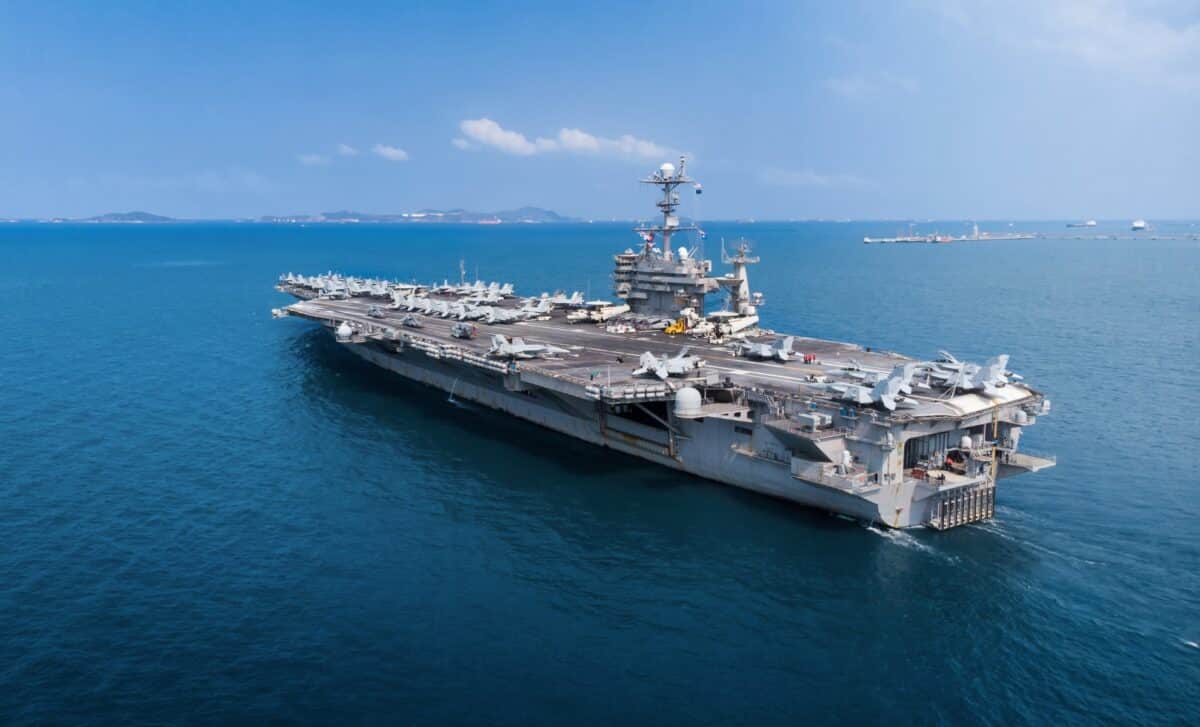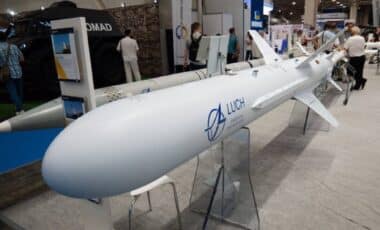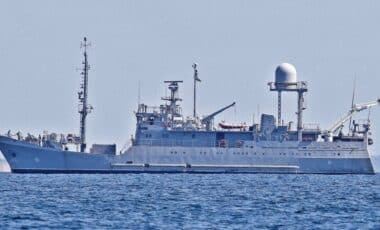Turkey is pushing forward with its defense expansion by constructing its first homegrown aircraft carrier, the Mugem, in Istanbul. The vessel is part of a broader effort to strengthen Turkey’s naval power and assert greater strategic autonomy within NATO. As a NATO member since 1952, Turkey has long relied on foreign military technology but is now taking steps to build its own advanced defense systems.
This ambitious project underscores Turkey’s commitment to bolstering its defense industry and reducing reliance on foreign military technologies. The Mugem, once completed, will mark a significant milestone in Turkey’s military development, particularly in maritime operations, reports Newsweek.
Leaked Deal Reveals China’s Massive Missile Fuel Shipment to Iran — War Risk Grows
A New Chapter in Turkey’s Defense Strategy
Turkey’s expansion in the defense sector is closely tied to its strategic goals under President Recep Tayyip Erdogan. With growing geopolitical tensions in the Middle East, particularly with Israel and Russia, Turkey’s need for a more independent defense capability has become more urgent. The construction of the Mugem is not only a military advancement but also a signal of Ankara’s desire to enhance its autonomy, particularly in naval warfare, while asserting its dominance in the region.
The Mugem is designed to be a state-of-the-art carrier, measuring approximately 285 meters in length and 72 meters in width, with a displacement of around 60,000 tons. It will be capable of carrying up to 50 aircraft, including unmanned combat drones and light jets. The vessel will feature a STOBAR (Short Takeoff and Landing, Barrier Arrested Recovery) system, which allows aircraft to operate from shorter runways, crucial for operations in confined spaces.
Mugem’s Role in Turkey’s Naval Ambitions
The Mugem is an integral part of Turkey’s growing naval power. Unlike traditional aircraft carriers, Turkey’s largest existing ship, the amphibious assault vessel TCG Anadolu, has limited carrier capabilities and mainly serves as a drone carrier. The Mugem will address this gap, providing a true aircraft carrier that enhances Turkey’s ability to project power across the Mediterranean and beyond.
Construction on the Mugem began earlier in 2025, with the ship expected to be completed in the coming years. Turkey’s goal is clear: to establish maritime independence and regional superiority, a goal which Turkish officials have emphasized repeatedly. The Mugem is part of a broader trend of Turkey’s expanding defense capabilities, which also includes the development of a fifth-generation fighter jet and other advanced military platforms. These efforts indicate a commitment to military self-sufficiency that could have long-term implications for Turkey’s role on the global stage.
Strategic Implications for Turkey’s Role in NATO
Turkey’s increasing military autonomy also carries implications for its relationship within NATO. As a NATO member, Turkey has been an ally of the U.S. for decades, but its growing defense capabilities could alter the dynamics of this relationship. According to statements from Turkey’s Presidency of Defense Industries, the Mugem and other defense projects will reduce Turkey’s dependence on foreign technologies, particularly in critical areas such as aircraft systems and power generation.
This move towards self-reliance has been framed as part of Turkey’s broader strategy to secure greater regional influence and assert its military independence, even as it remains a key NATO member. However, as noted by analysts, achieving this goal will require continued investment and development in areas where Turkey still relies on foreign expertise and equipment.








